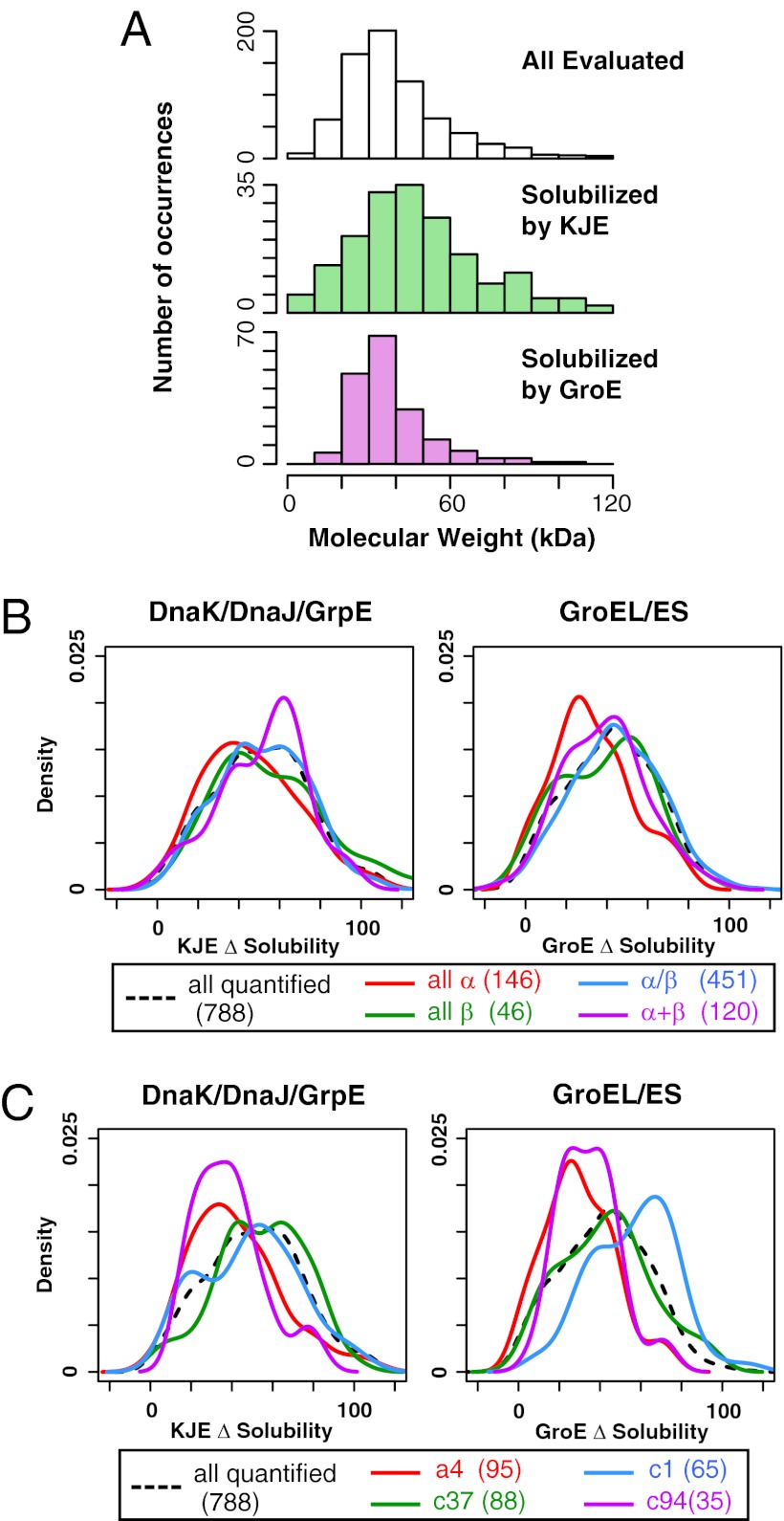Fig. 4.
Correlation between chaperone effects and physicochemical properties. (A) Histograms of molecular weight for all evaluated proteins and the proteins that were rescued by DnaKJE or GroE. Well-solubilized proteins were defined as those in the upper quartile (≥75th percentile) in Δsolubility for DnaKJE or GroE. (B) Comparison between Δsolubility and SCOP classes (all α, all β, α/β, and α+β). The distributions of Δsolubility for DnaKJE and GroE are shown by Kernel-type density maps. The numbers in parentheses indicate the number of proteins categorized in each class. (C) Comparison between Δsolubility and SCOP folds. The four most abundant SCOP folds in the quantified proteins are shown by Kernel-type density maps. The numbers in parentheses indicate the number of proteins categorized in each fold. a4, DNA/RNA-binding 3-helical bundle; c1, TIM β/α-barrel; c37, P-loop containing nucleoside triphosphate hydrolases; c94, Periplasmic binding protein-like II.

